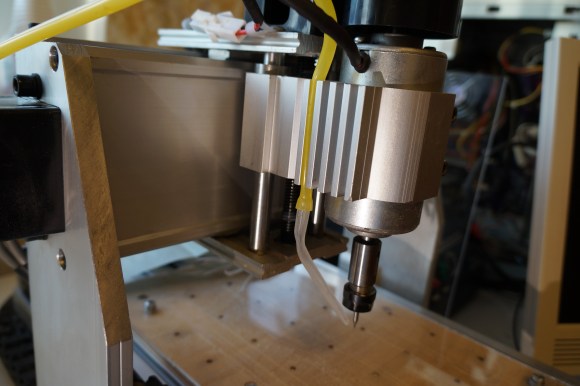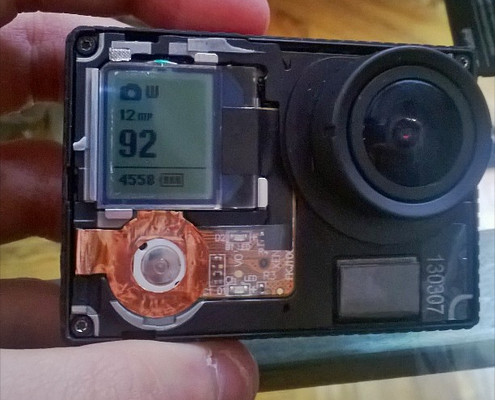
GoPro cameras come out of the box with a huge set of features. Most people will be satisfied, or possibly even overwhelmed by the available options, but if you’re able to do some of these hacks, you’ll be able to expand your camera’s capabilities even more. They can, however, void your warranty, so as with most hacking, do these at your own risk.
Scripting with Autoexec.ash
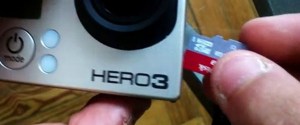 By far the simplest way to extend your GoPro’s capabilities is by placing a text file in your GoPro camera’s root folder called Autoexec.ash. You can download a number of scripts on chernowee.com, which should be very easy to modify per [Konrad's] insights. Use of these scripts is quite powerful, and one can modify elements of the camera from simply blinking the LEDs, to changing video capture properties, to many other useful settings.
By far the simplest way to extend your GoPro’s capabilities is by placing a text file in your GoPro camera’s root folder called Autoexec.ash. You can download a number of scripts on chernowee.com, which should be very easy to modify per [Konrad's] insights. Use of these scripts is quite powerful, and one can modify elements of the camera from simply blinking the LEDs, to changing video capture properties, to many other useful settings.
You can check these out on his page, or here’s his Github account if you prefer that method. He’s quick to point out that this will void your warranty, so proceed with caution. Although tempting to try, I don’t (yet) have a pressing situation that "stock" GoPro features don’t address. The risk may be small, but for me the reward is almost nonexistent.
Hacking over WiFi
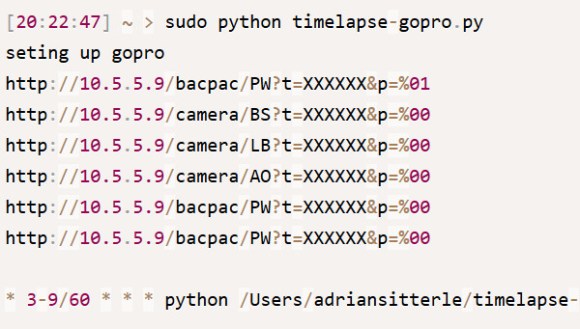
If writing a script to reside on your GoPro isn’t really your style, or feels too risky, you can always use a script on your computer to control the camera. [Adrian] did just that, writing a Python script to control the time lapse frequency beyond the "stock" 60 seconds. There are many more commands that can be done over WiFi with a similar scripting technique, which [Korad] his listed on his GitHub page here.
Also outlined on [Adrian's] page is that it’s actually pretty simple to log on to your GoPro with a computer and browse around. This type of "hacking" would be something interesting for even the most time-constricted “script kiddies.”
This WiFi script comes via Reddit, which claims it is not hacking… Go ahead, feel free to write "not a hack" in the comments!
BacPac Bus Hack
In case you weren’t impressed enough with 14-year-old [Konrad's] Autoexec.ash hacking, or his list of WiFi commands, he also lists the functions of the pins on the BacPac connectors on his site (and disassembled one, as seen in the first picture). I had never really thought about using this as an access point for more buttons or outputs, but naturally, there is a lot of IO capability running out through this port.
One could imagine hooking up an Arduino or Raspberry Pi to this bus, and controlling the camera through it. Especially given the RGB video output pins, it’s hard not to think of the interesting hacks that could come from this type of control. If you’ve ween working on some BacPac hacks already we want to hear about it!
DIY Mounting Options
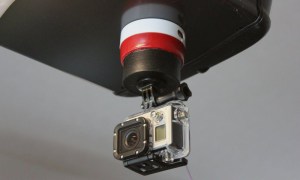 Switching gears, probably my favorite class of GoPro "hacks" is the DIY ways that people come up with to mount them. Among the most useful, and simplest, is the kitchen timer GoPro mount. We’ve featured a couple of interesting models, including this excellent mount using Ikea parts. Here’s one that I made using a different style timer with a magnetic base, leading to some unique mounting possibilities.
Switching gears, probably my favorite class of GoPro "hacks" is the DIY ways that people come up with to mount them. Among the most useful, and simplest, is the kitchen timer GoPro mount. We’ve featured a couple of interesting models, including this excellent mount using Ikea parts. Here’s one that I made using a different style timer with a magnetic base, leading to some unique mounting possibilities.
On the more extreme end, you could launch your GoPro into the air with a slingshot, or there’s always the single-GoPro bullet-time rotation hack. [HAD] alum [Caleb] demonstrates this quite successfully here, but you might have also seen this excellent effect using a ceiling fan, and fireworks. Everything is better with fire!
Mounting + Software = Extra Awesome
Finally, if you "happen" to have 6 GoPro cameras, a 3D printer to make the mount, and software to stitch the video together, you can create an incredible spherical panorama video. Watching the results below makes me feel like I’m about to fall off of the earth into space, but it’s hard not to keep looking! [Via Reddit]
 Jeremy Cook is a manufacturing engineer with 10 years experience as his full-time profession, and has a BSME from Clemson University. Outside of work he's an avid maker and experimenter, working on everything from hobby CNC machinery, to light graffiti, and even the occasional DIY musical instrument. When he's not busy creating (or destroying) something, you can find him on Twitter @JeremySCook
Jeremy Cook is a manufacturing engineer with 10 years experience as his full-time profession, and has a BSME from Clemson University. Outside of work he's an avid maker and experimenter, working on everything from hobby CNC machinery, to light graffiti, and even the occasional DIY musical instrument. When he's not busy creating (or destroying) something, you can find him on Twitter @JeremySCook
Filed under:
digital cameras hacks,
Featured,
how-to 





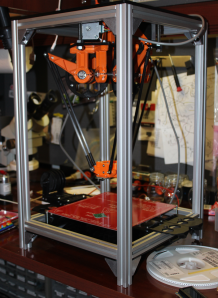
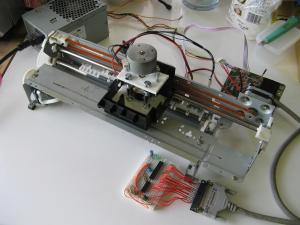
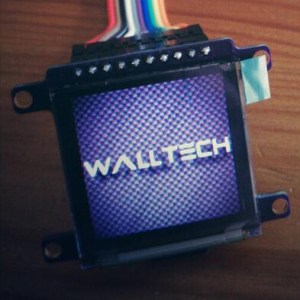
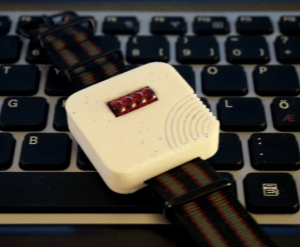
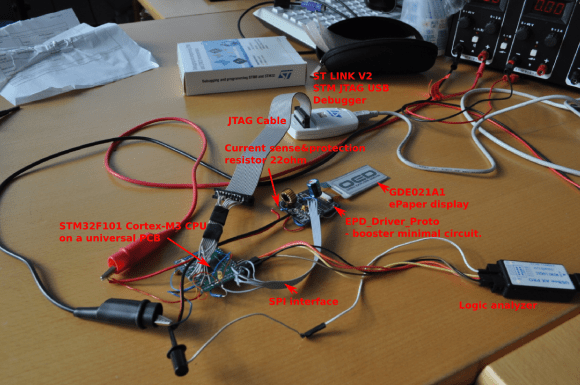

 By far the simplest way to extend your GoPro’s capabilities is by placing a text file in your GoPro camera’s root folder called Autoexec.ash. You can download a number of scripts on
By far the simplest way to extend your GoPro’s capabilities is by placing a text file in your GoPro camera’s root folder called Autoexec.ash. You can download a number of scripts on 
 Switching gears, probably my favorite class of GoPro "hacks" is the DIY ways that people come up with to mount them. Among the most useful, and simplest, is the kitchen timer GoPro mount. We’ve featured a couple of interesting models, including this
Switching gears, probably my favorite class of GoPro "hacks" is the DIY ways that people come up with to mount them. Among the most useful, and simplest, is the kitchen timer GoPro mount. We’ve featured a couple of interesting models, including this  Jeremy Cook is a manufacturing engineer with 10 years experience as his full-time profession, and has a BSME from Clemson University. Outside of work he's an avid maker and experimenter, working on everything from hobby CNC machinery, to light graffiti, and even the occasional DIY musical instrument. When he's not busy creating (or destroying) something, you can find him on Twitter
Jeremy Cook is a manufacturing engineer with 10 years experience as his full-time profession, and has a BSME from Clemson University. Outside of work he's an avid maker and experimenter, working on everything from hobby CNC machinery, to light graffiti, and even the occasional DIY musical instrument. When he's not busy creating (or destroying) something, you can find him on Twitter 